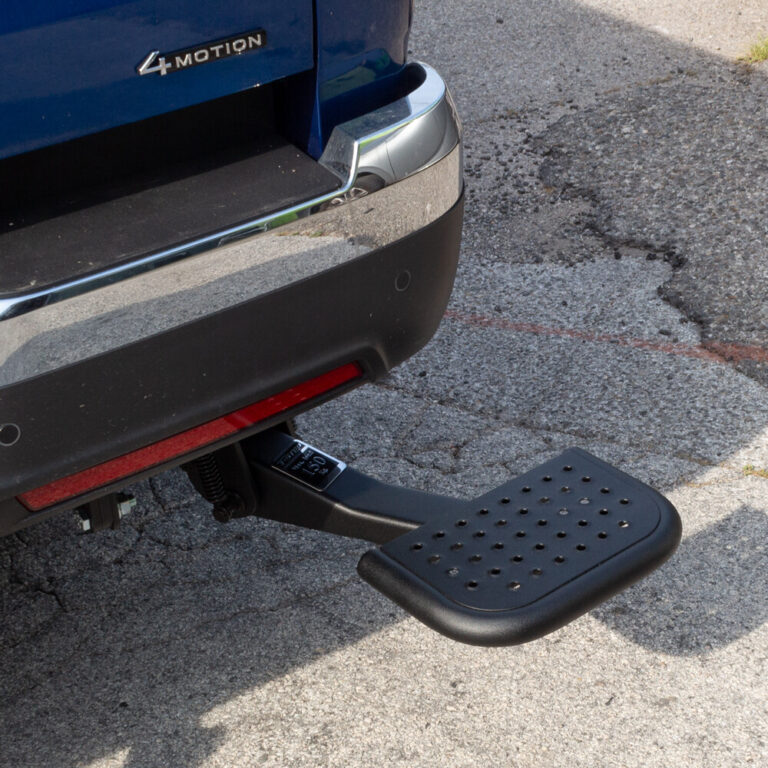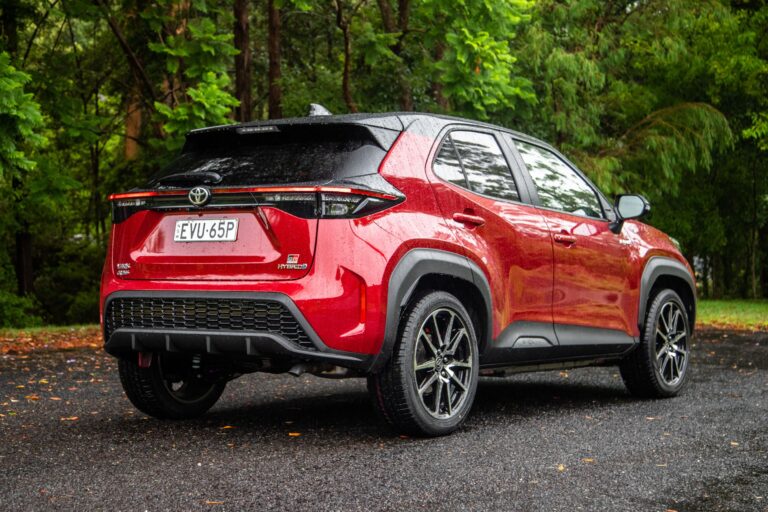Semi Trucks For Sale With Bad Credit: Your Comprehensive Guide to Ownership
Semi Trucks For Sale With Bad Credit: Your Comprehensive Guide to Ownership cars.truckstrend.com
The open road beckons, the hum of a powerful diesel engine calls, and the dream of being an independent owner-operator is a compelling one. For many, this dream is shadowed by a common obstacle: bad credit. The conventional path to financing a semi-truck often requires a stellar credit history, leaving those with past financial stumbles feeling shut out. However, the landscape of commercial vehicle financing is more diverse and nuanced than you might think.
This comprehensive guide is designed to empower aspiring and current truckers who face the challenge of bad credit. We will delve into the realities of purchasing a semi-truck when your credit score isn’t ideal, exploring alternative financing avenues, essential preparation strategies, and practical advice to help you navigate this complex journey successfully. While the road may be tougher, it is by no means impassable.
Semi Trucks For Sale With Bad Credit: Your Comprehensive Guide to Ownership
Understanding Bad Credit in Commercial Lending
Before diving into solutions, it’s crucial to understand what "bad credit" signifies in the eyes of a commercial lender and why it poses a challenge.
What Constitutes "Bad Credit"?
Generally, a FICO score below 600-620 is considered "subprime" or "bad credit." This can result from:
- Late payments: A history of missed or habitually late payments on loans, credit cards, or other financial obligations.
- High debt utilization: Maxed-out credit cards or a high ratio of debt to available credit.
- Collections or charge-offs: Accounts that have gone unpaid and been sent to a collection agency or written off by the original creditor.
- Bankruptcies: Chapter 7 or Chapter 13 bankruptcies, which significantly impact credit scores for several years.
- Repossessions: Especially relevant for vehicle financing, a prior vehicle repossession is a major red flag.

Why Lenders Are Hesitant
For lenders, a low credit score signals a higher risk of default. Commercial vehicle financing involves substantial amounts of money, often ranging from $30,000 for an older used truck to over $150,000 for a newer model. Lenders need assurance that the borrower will consistently make payments. Bad credit suggests a historical inability or unwillingness to meet financial commitments, making them wary. They perceive a greater chance of losing their investment if the borrower defaults.

Personal vs. Commercial Credit
While personal credit heavily influences initial commercial lending decisions, especially for owner-operators, lenders also assess your business’s financial health. If you already operate as a sole proprietor or have a nascent trucking business, your business’s income, contracts, and profitability can sometimes mitigate the impact of a less-than-perfect personal credit score. However, for most first-time owner-operators, personal credit is the primary gateway.
The Path to Ownership: Alternative Financing Options
While traditional bank loans might be out of reach with bad credit, several alternative avenues cater specifically to this demographic.
1. Subprime Lenders and Specialty Finance Companies

These lenders specialize in financing individuals and businesses with less-than-perfect credit. They are more willing to take on higher risk but compensate for it through:
- Higher Interest Rates (APR): Expect interest rates significantly higher than prime rates, often ranging from 15% to 35% or even higher, depending on the severity of your credit issues and the perceived risk.
- Larger Down Payments: They typically require a substantial down payment, often 15% to 30% or more of the truck’s value, as it reduces their exposure.
- Shorter Loan Terms: To mitigate risk, loan terms might be shorter (e.g., 24-48 months instead of 60-72 months), leading to higher monthly payments.
- Stricter Collateral Requirements: The truck itself serves as collateral, and the lender will likely require comprehensive insurance coverage naming them as a loss payee.
Pros: Accessible for those with limited options.
Cons: Very expensive, high monthly payments, higher risk of repossession if payments are missed.
2. Lease-to-Own Agreements
This is a popular option for those with bad credit. In a lease-to-own (or rent-to-own) agreement, you essentially lease the truck with the option to purchase it at the end of the lease term, or even earlier.
- How it Works: You make regular lease payments, a portion of which may go towards the purchase price or build equity. At the end of the term, you pay a pre-determined residual value (buyout price) to own the truck outright.
- Benefits: Lower upfront costs than a traditional purchase (though a significant "security deposit" or "first and last month’s payment" might be required), and it can be easier to qualify for than a direct loan. It also allows you to build a payment history, which can improve your credit for future financing.
- Risks: If you miss payments, you can lose the truck and any equity you’ve built. The total cost over the lease term can often be higher than a traditional loan.
Pros: Easier to qualify, lower initial cash outlay, can build credit.
Cons: Can be more expensive long-term, strict terms, no ownership until final payment.
3. Dealer or Manufacturer Financing Programs
Some larger dealerships or truck manufacturers offer their own in-house financing, sometimes with programs designed for subprime borrowers. They might have more flexibility, especially if they are trying to move specific inventory. It’s always worth asking if they have any "second-chance" or "owner-operator startup" programs.
Pros: Potentially more flexible terms, convenient "one-stop shop."
Cons: May still have high rates, limited to specific truck models/brands.
4. Co-Signer or Guarantor
If you have a trusted individual with excellent credit (a family member, close friend) willing to co-sign the loan, this can significantly improve your chances of approval and secure better terms. The co-signer becomes equally responsible for the debt, so they must understand the risk.
Pros: Better interest rates, higher approval chances.
Cons: Places a significant financial burden on the co-signer.
5. Private Sellers with Seller Financing (Rare)
While rare for semi-trucks due to their high value, some private sellers might be open to seller financing (carrying the note themselves). This usually happens if they know and trust the buyer, or if they are having difficulty selling the truck through conventional means. A substantial down payment would almost certainly be required.
Pros: Potentially flexible terms, no credit check.
Cons: Very difficult to find, high risk for both parties without proper legal documentation.
Preparing for Your Semi-Truck Purchase with Bad Credit
Success in securing a semi-truck with bad credit hinges on meticulous preparation and presenting yourself as a low-risk borrower, despite your credit history.
1. Credit Improvement Strategies
While a complete credit overhaul takes time, some immediate steps can help:
- Get a Credit Report and Score: Understand exactly where you stand. Dispute any errors immediately.
- Pay Down Small Debts: Tackle small outstanding debts or those with high interest rates. This can quickly improve your debt-to-income ratio.
- Become Current on All Payments: Ensure all existing accounts are up to date. Consistent on-time payments are crucial.
- Avoid New Credit Inquiries: Limit applying for other forms of credit in the months leading up to your truck application.
2. The Power of a Substantial Down Payment
For bad credit buyers, the down payment is arguably the most critical factor. The more cash you put down, the less the lender has to risk, and the more serious you appear. Aim for 20-30% of the truck’s value, if possible. This not only increases your approval chances but can also lower your monthly payments and potentially secure a slightly better interest rate.
3. Develop a Robust Business Plan
Even if you’re a sole proprietor, a clear business plan demonstrates your understanding of the trucking industry and your ability to generate income. Include:
- Operating Costs: Fuel, insurance, maintenance, tolls, permits.
- Projected Income: Based on potential contracts, routes, and rates.
- Contingency Fund: Show you have reserves for unexpected repairs or downtime.
- Your Experience: Highlight your driving record, CDL endorsements, and any relevant experience.
4. Gather Comprehensive Financial Documentation
Lenders will scrutinize your income and financial stability. Prepare:
- Bank Statements: 6-12 months of personal and business bank statements.
- Tax Returns: Past 2-3 years of personal and business tax returns.
- Proof of Income: Pay stubs (if applicable), invoices, freight contracts, or letters from brokers.
- Proof of Residency: Utility bills, lease agreements.
5. Understand the Truck’s Value and Condition
With bad credit, you’ll likely be looking at used trucks. Have any potential truck thoroughly inspected by an independent mechanic. Get an appraisal if possible. Lenders want to ensure the collateral (the truck) is worth the loan amount. Older, higher-mileage trucks are more accessible but also come with higher maintenance risks.
Navigating the Application Process
1. Research Lenders Diligently
Don’t just apply everywhere. Look for lenders specifically advertising "bad credit semi truck loans" or "owner-operator financing." Read reviews, check their Better Business Bureau ratings, and compare their terms.
2. Be Transparent and Honest
It’s tempting to hide past financial mistakes, but lenders will uncover them. Be upfront about your credit history and explain any mitigating circumstances (e.g., medical emergency, job loss). Showing responsibility for past issues and demonstrating a plan for the future can build trust.
3. Read the Fine Print (Critically!)
This cannot be stressed enough. High-risk loans come with stringent terms. Understand:
- Interest Rates and APR: What is the true annual cost of the loan?
- Fees: Origination fees, processing fees, documentation fees.
- Prepayment Penalties: Can you pay off the loan early without penalty if your financial situation improves?
- Repossession Clauses: What are the exact conditions under which the lender can repossess the truck?
- Insurance Requirements: The type and amount of insurance required.
4. Beware of Scams
If an offer sounds too good to be true, it probably is. Be wary of lenders who:
- Guarantee approval without any credit check or financial documentation.
- Demand upfront fees before any loan is approved or disbursed.
- Communicate unprofessionally or lack a physical address.
Types of Semi-Trucks Suited for Bad Credit Buyers
When your credit is challenged, your options for trucks become more limited, primarily focusing on used vehicles.
- Older, High-Mileage Trucks (7+ years old, 700,000+ miles): These are the most accessible due to lower purchase prices ($20,000 – $50,000). However, they come with higher maintenance risks and potential downtime, which can derail your ability to make payments. Lenders might be more hesitant if the truck’s value depreciates too quickly or requires significant repairs.
- Mid-Age Used Trucks (4-6 years old, 400,000-700,000 miles): A better balance of affordability and reliability ($50,000 – $90,000). These trucks might still have some life left on major components and are generally more attractive to lenders.
- Newer Used Trucks (1-3 years old, under 400,000 miles): While more expensive ($90,000 – $150,000+), they offer greater reliability and efficiency. Financing these with bad credit will be significantly harder and require a very substantial down payment and compelling financial projections.
Avoid looking at brand-new trucks initially. The cost and stringent financing requirements make them virtually impossible to secure with bad credit. Focus on reliability over luxury.
Challenges and Solutions
1. High Interest Rates
- Challenge: The most immediate impact of bad credit. High APRs eat into your profits.
- Solution: Focus on making consistent, on-time payments. After 12-24 months of perfect payment history, explore refinancing options with traditional lenders. Your improved payment history will often qualify you for a much lower rate.
2. Shorter Loan Terms and Higher Monthly Payments
- Challenge: Shorter terms mean higher monthly payments, putting a strain on cash flow.
- Solution: Ensure your business plan can comfortably support these payments. Build a strong emergency fund to cover periods of low income or unexpected repairs. Consider taking on additional contracts or routes to boost revenue.
3. Large Down Payments
- Challenge: Saving up a significant sum can be difficult.
- Solution: Start saving aggressively well in advance. Consider selling non-essential assets or taking on temporary side jobs to build your down payment fund.
4. Stricter Collateral Requirements
- Challenge: The truck itself is the collateral, and lenders will be vigilant about its condition and your insurance coverage.
- Solution: Maintain the truck meticulously. Keep detailed service records. Ensure you have comprehensive insurance coverage that meets the lender’s requirements at all times.
5. Building Credit for the Future
- Challenge: Your current bad credit is an obstacle.
- Solution: This truck loan, if managed well, is your opportunity to rebuild. Make every single payment on time. This will positively impact your personal and potentially your business credit scores, opening doors to better financing options, insurance rates, and even future business opportunities.
Estimated Semi-Truck Costs & Financing Considerations for Bad Credit Buyers
The "price" of a semi-truck with bad credit isn’t just the sticker price; it’s the total cost of ownership, heavily influenced by financing terms. This table provides estimated ranges and considerations.
| Truck Type/Age | Estimated Purchase Price Range (Used) | Typical Down Payment (Bad Credit) | Estimated APR Range (Bad Credit) | Key Considerations for Bad Credit Buyers |
|---|---|---|---|---|
| Older Used | $20,000 – $50,000 | 20-30% ($4,000 – $15,000) | 25% – 35%+ | Most accessible. Higher risk of repairs/downtime. Higher maintenance costs. Lender might require higher collateral on older trucks. |
| (7+ years old, | ||||
| 700K+ miles) | ||||
| Mid-Age Used | $50,000 – $90,000 | 15-25% ($7,500 – $22,500) | 18% – 28% | Better balance of cost & reliability. Still requires significant down payment. Good option for building credit history. |
| (4-6 years old, | ||||
| 400K-700K miles) | ||||
| Newer Used | $90,000 – $150,000+ | 25-35%+ ($22,500 – $52,500+) | 15% – 25% | More challenging to finance with bad credit. Requires very strong income proof and a substantial down payment. Lower maintenance risk. |
| (1-3 years old, | ||||
| under 400K miles) |
Note: These are estimates. Actual rates and terms depend on your specific credit profile, income, the lender, and the truck’s condition. A higher down payment and strong income proof can sometimes help reduce the APR.
Frequently Asked Questions (FAQ)
Q1: Can I really get a semi-truck with bad credit?
A1: Yes, it is absolutely possible, but it will be more challenging and more expensive than for someone with good credit. You’ll likely need a larger down payment and will face higher interest rates.
Q2: What’s the minimum down payment I’ll need?
A2: While some lenders might advertise 10% down, with bad credit, you should aim for at least 15-20%, and ideally 25-30% or more. A larger down payment significantly improves your chances of approval and can help secure slightly better terms.
Q3: Will my interest rates be very high?
A3: Yes, expect significantly higher interest rates (APR) compared to prime borrowers. Rates can range from 15% to 35% or even higher, depending on the severity of your credit issues.
Q4: What documents do I need for a bad credit truck loan?
A4: Lenders will typically ask for your personal and business bank statements (6-12 months), tax returns (2-3 years), proof of income (contracts, pay stubs), CDL, and proof of residency. They’ll also want detailed information about the truck you intend to buy.
Q5: Is lease-to-own a good option for bad credit?
A5: Lease-to-own can be a viable option, especially if you have limited cash for a down payment. It often has easier qualification requirements. However, ensure you understand the full cost, terms, and the buyout price, as it can sometimes be more expensive in the long run than a traditional loan.
Q6: How can I improve my chances of approval?
A6: Save a substantial down payment, be prepared with thorough financial documentation, create a solid business plan, be transparent about your credit history, and show a commitment to improving your financial situation. A strong co-signer can also significantly help.
Q7: Are there specific lenders for bad credit truck loans?
A7: Yes, many specialty finance companies and subprime lenders focus on this market. You can find them through online searches for "bad credit semi truck financing," "owner-operator startup loans," or "commercial truck subprime lenders." Always research their reputation before applying.
Conclusion
The dream of owning a semi-truck and becoming an independent owner-operator is within reach, even if your credit history isn’t perfect. While the path to securing financing with bad credit presents unique challenges – primarily higher costs and stricter terms – it is not an insurmountable barrier.
Success hinges on meticulous preparation, a realistic understanding of the financial commitment, and the discipline to manage your new venture responsibly. By focusing on a substantial down payment, demonstrating consistent income, presenting a solid business plan, and diligently researching specialized lenders, you can significantly improve your chances. Remember, this first truck loan can also be a powerful tool for rebuilding your credit, paving the way for better financial opportunities in the future. The road to ownership might be winding, but with determination and the right strategy, you can confidently steer your way to success.






